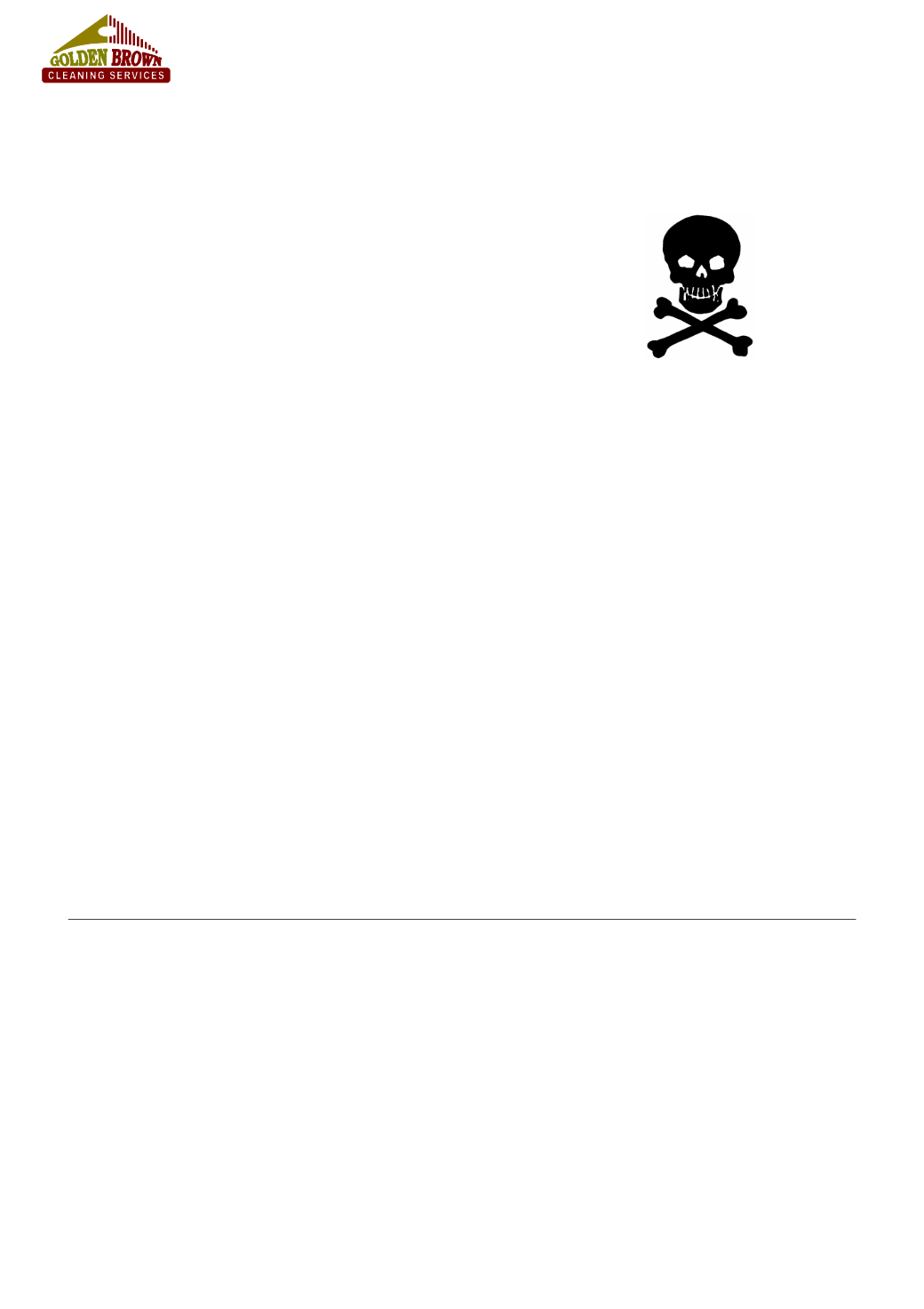

Page 18 of 33
Hazardous Substances
A substance can be identified as hazardous by reading both the label and the
material safety data sheet (MSDS). The label may say “Poison”, “Caution”,
“Warning” or “Hazardous”.
The MSDS may state: “This substance has been determined to be hazardous
against the Worksafe Criteria.
Examples of Hazardous Substances include but are not limited to:
degreasing agents and solvents
disinfectants
petrol and oils
graffiti removers
pesticides
soaps and detergents
bleaches
paint strippers
insecticides
The aim of the hazardous substances provisions in the legislation is to
minimise
the risk to health due to exposure
to hazardous substances in the workplace by;
ensuring all hazardous substances used in the workplace are labelled and have MSDS’s;
providing for the assessment of the risk of, and the control of, exposure to hazardous substances;
ensuring that all cleaners who could be exposed to hazardous substances at work are provided with
appropriate information and training on such substances;
ensuring that emergency services personnel have access to information on the hazardous substances
contained in the workplace;
looking for non-hazardous substitutes to replace dangerous substances.
What you should do
Read the MSDS and make sure you understand them
If you have any doubts, ask your supervisor
Follow the instructions and procedures provided during training, and also on chemical labels and
MSDS, to make sure you use the substance correctly
If you have any adverse health effects to a chemical, stop using it immediately and tell your
supervisor
















